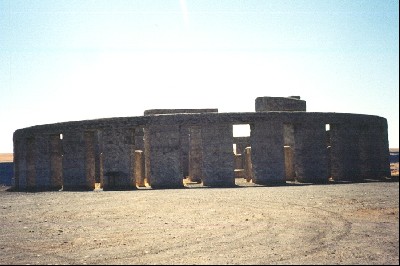|
Places of Interest
Photographed and published by Unichrome of Bath Stonehenge: Stonehenge is the highly debated monument, as to who built it and why. Stonehenge
was built in 3 phases sterning many years apart. Due to the weight, distance to be moved, and other factors it would take
someone highly skilled in math to figure out just how to do this. Stonehenge is well known for its astronomical attributes
concerning seasons, and solstices, so it would tae someone highly skilled in astronomy to figure out where to align these
big stones. A highly sacred place needed to be situated in a relatively safe place but still accessible to various areas.
Multitudes of stone circles are located throughout the druid nations. Stones are thought to be a grounding agent. Circles
were symbolic to the druids. Who lived in the area or its proximity to access such a monument. All factors and attributes
point to the druid people and the nations. Today, through the co-operation of several British Druidic groups, it is open to
the general public on summer solstice morning, and a festival takes place there at that time every year.
Callanish: A very interesting monument stands in The outer
Hebrides of Scotland on the Island of Lewis. The stones are not topped with capstones as they are with stonehenge but form
an interesting shape. The stones form an irregular Celtic Cross, with a large ring of 13 stones surrounding a large central
stone. Four lines of stones extending in a cross shape from the center. The east and west lines have four stones each, the
north line forms an avenue of two parallel lines one with eight and one with ten stones. The south line is formed by six smaller
stones. The main axis is aligned to the midsummer solstice. Other astronomical alignments include the annual rising places
of bright stars Altair and Capella. Newgrange: Newgrange
also goes by Cashel Aengus and Brugh Na Boinne. It is a "passage grave" or "passage mound". New Grange is the world's largest
passage mound of its kind, and among the oldest, being made around 3,500 BC. It is a large circular man-made mound of earth
surrounded by a ring of kerbstones. A single passage opens from the south-east face that leads into the mound to a central
chamber. The passage is angled so carefully that direct sunlight can enter as far as the central chamber, some 80 feet inside
the monument, only at sunrise on midwinter morning. Close to Newgrange are several other passage mounds. Knowth, has two passages
aligned to sunrise and sunset on the equinoxes. The Loughcrew Complex, located in a different part of Ireland, and Maes Howe
in Scotland also admit sunlight only on Midwinter morning.
Other Places America's Stonehenge is one of the largest and possibly oldest megalithic (stone-constructed) sites in North America. Like Stonehenge in
England, America's Stonehenge was built by ancient people well versed in astronomy and stone construction. It has been determined
that the site is an accurate astronomically aligned calendar. It was and still can be used to determine specific solar and
lunar events of the year. Located in Salem, New Hampshire
Washington State 97 Photo Maryhill State Park is a 99-acre camping park with 4,700 feet of waterfront on the Columbia River in Klickitat County. The area is significant
for its natural beauty, its access to the surrounding natural wonders and its cultural history. A full-scale model of Stonehenge
stands near the park. Located 12 miles south of Goldendale, Wash. |
||||



